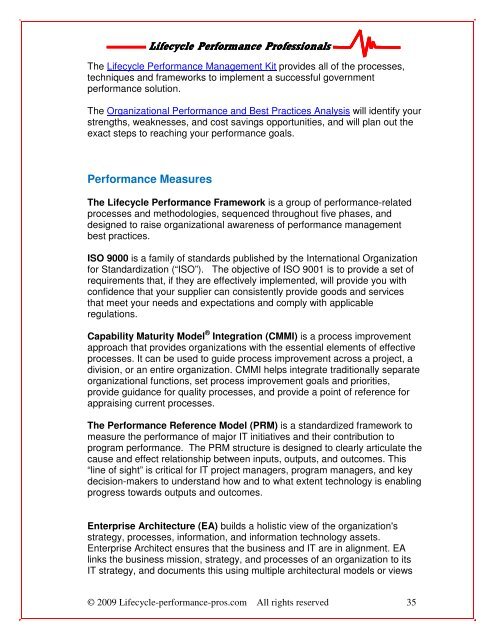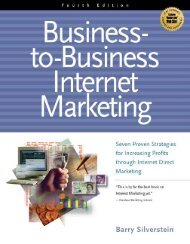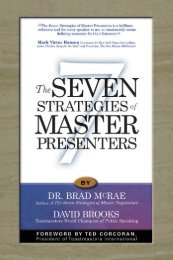Download the Performance Management Fundamentals Guide
Download the Performance Management Fundamentals Guide
Download the Performance Management Fundamentals Guide
You also want an ePaper? Increase the reach of your titles
YUMPU automatically turns print PDFs into web optimized ePapers that Google loves.
Lifecycle Lifecycle <strong>Performance</strong> <strong>Performance</strong> Professionals<br />
Professionals<br />
The Lifecycle <strong>Performance</strong> <strong>Management</strong> Kit provides all of <strong>the</strong> processes,<br />
techniques and frameworks to implement a successful government<br />
performance solution.<br />
The Organizational <strong>Performance</strong> and Best Practices Analysis will identify your<br />
strengths, weaknesses, and cost savings opportunities, and will plan out <strong>the</strong><br />
exact steps to reaching your performance goals.<br />
<strong>Performance</strong> Measures<br />
The Lifecycle <strong>Performance</strong> Framework is a group of performance-related<br />
processes and methodologies, sequenced throughout five phases, and<br />
designed to raise organizational awareness of performance management<br />
best practices.<br />
ISO 9000 is a family of standards published by <strong>the</strong> International Organization<br />
for Standardization (“ISO”). The objective of ISO 9001 is to provide a set of<br />
requirements that, if <strong>the</strong>y are effectively implemented, will provide you with<br />
confidence that your supplier can consistently provide goods and services<br />
that meet your needs and expectations and comply with applicable<br />
regulations.<br />
Capability Maturity Model ® Integration (CMMI) is a process improvement<br />
approach that provides organizations with <strong>the</strong> essential elements of effective<br />
processes. It can be used to guide process improvement across a project, a<br />
division, or an entire organization. CMMI helps integrate traditionally separate<br />
organizational functions, set process improvement goals and priorities,<br />
provide guidance for quality processes, and provide a point of reference for<br />
appraising current processes.<br />
The <strong>Performance</strong> Reference Model (PRM) is a standardized framework to<br />
measure <strong>the</strong> performance of major IT initiatives and <strong>the</strong>ir contribution to<br />
program performance. The PRM structure is designed to clearly articulate <strong>the</strong><br />
cause and effect relationship between inputs, outputs, and outcomes. This<br />
“line of sight” is critical for IT project managers, program managers, and key<br />
decision-makers to understand how and to what extent technology is enabling<br />
progress towards outputs and outcomes.<br />
Enterprise Architecture (EA) builds a holistic view of <strong>the</strong> organization's<br />
strategy, processes, information, and information technology assets.<br />
Enterprise Architect ensures that <strong>the</strong> business and IT are in alignment. EA<br />
links <strong>the</strong> business mission, strategy, and processes of an organization to its<br />
IT strategy, and documents this using multiple architectural models or views<br />
© 2009 Lifecycle-performance-pros.com All rights reserved 35










